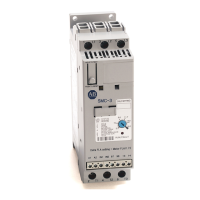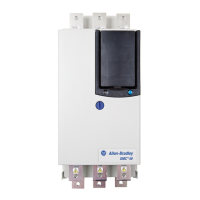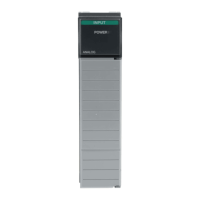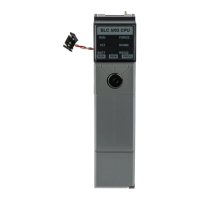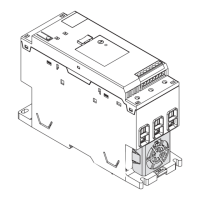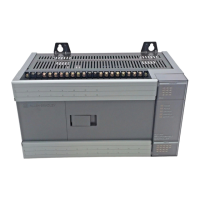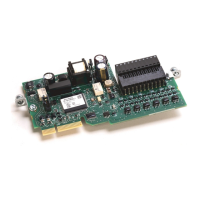184 Rockwell Automation Publication MOTION-RM002H-EN-P-February 2018
master reference position shift, the MAM instruction must be initiated after the
MAPC is initiated.
See the Motion Axis Move (MAM) instruction for more information on Master
Offset moves.
Stopping a Cam
Like other motion generators (jog, move, gear) active cams must be stopped by the
various stop instructions, such as the Motion Axis Stop (MAS) or the Motion
Group Stop (MGS). Cam motion must also stop when the ControlLogix
processor changes OS modes. The MAS instruction, in particular, must be able to
specifically stop the camming process. This behavior should be identical to the
MAS functionality that specifically stops a gearing process.
Merging from a Cam
Like other motion generators (jog, move, gear) active cams must also be compliant
with motion merge functionality. Moves and Jogs, in particular, must be able to
merge from active camming. This behavior should be identical to the merge
functionality applied to a gearing process.
Fault Recovery
Sometimes it is necessary to respond to an axis fault condition without loosing
synchronization between a master and slave axis that are locked in a cam
relationship. With an active cam there are a couple ways to handle axis faults.
Create a virtual axis and cam everything to it and, if necessary, gear this virtual
master axis to actual master axis of the machine. Set the various fault actions for all
axes to Status Only. When an axis fault occurs (for example, a drive fault) an
application program monitoring the axes fault status detects the fault and does a
controlled stop of all active axes by stopping the virtual master axis. At the profiler
level, everything is still fully synchronized. Use the following error on faulted axis
to determine how far it is out of position. Reset the fault on the faulted axis, bring
into position at a controlled speed using the MAM instruction and the computed
following error. Finally, start moving virtual master axis.
Same configuration as above but, in this case, when the slave axis faults the axis
fault action disables the drive. This, of course, would terminate the active cam
process on the slave axis. At this point, the application program should stop all
other axes via the virtual master axis. Next, reposition the faulted axis by
determining where the master is, and then calculating where the slave axis should
be had the fault not occurred. Finally, do an immediate lock MAPC to
resynchronize with the Cam Lock Position set to the calculated value.

